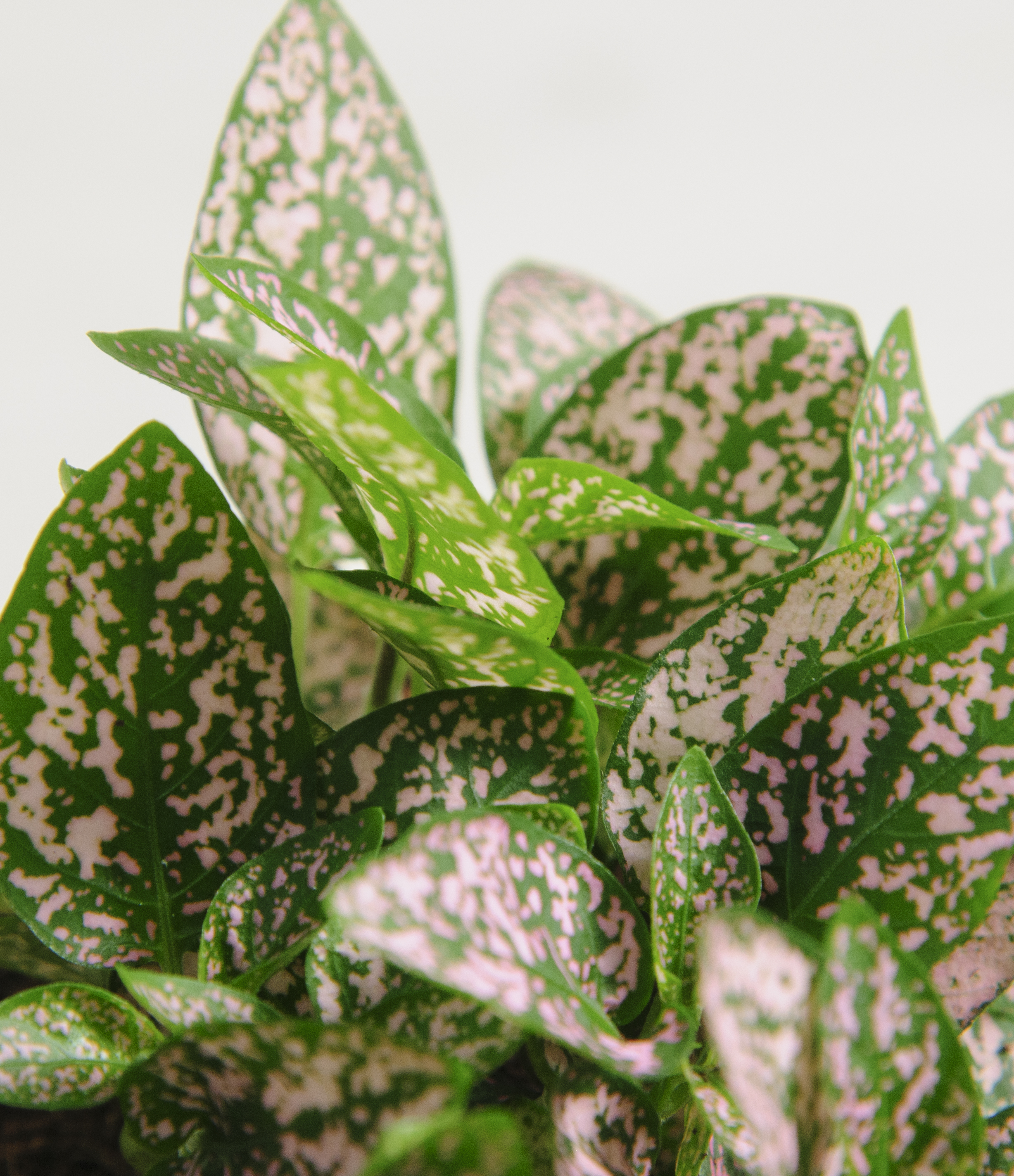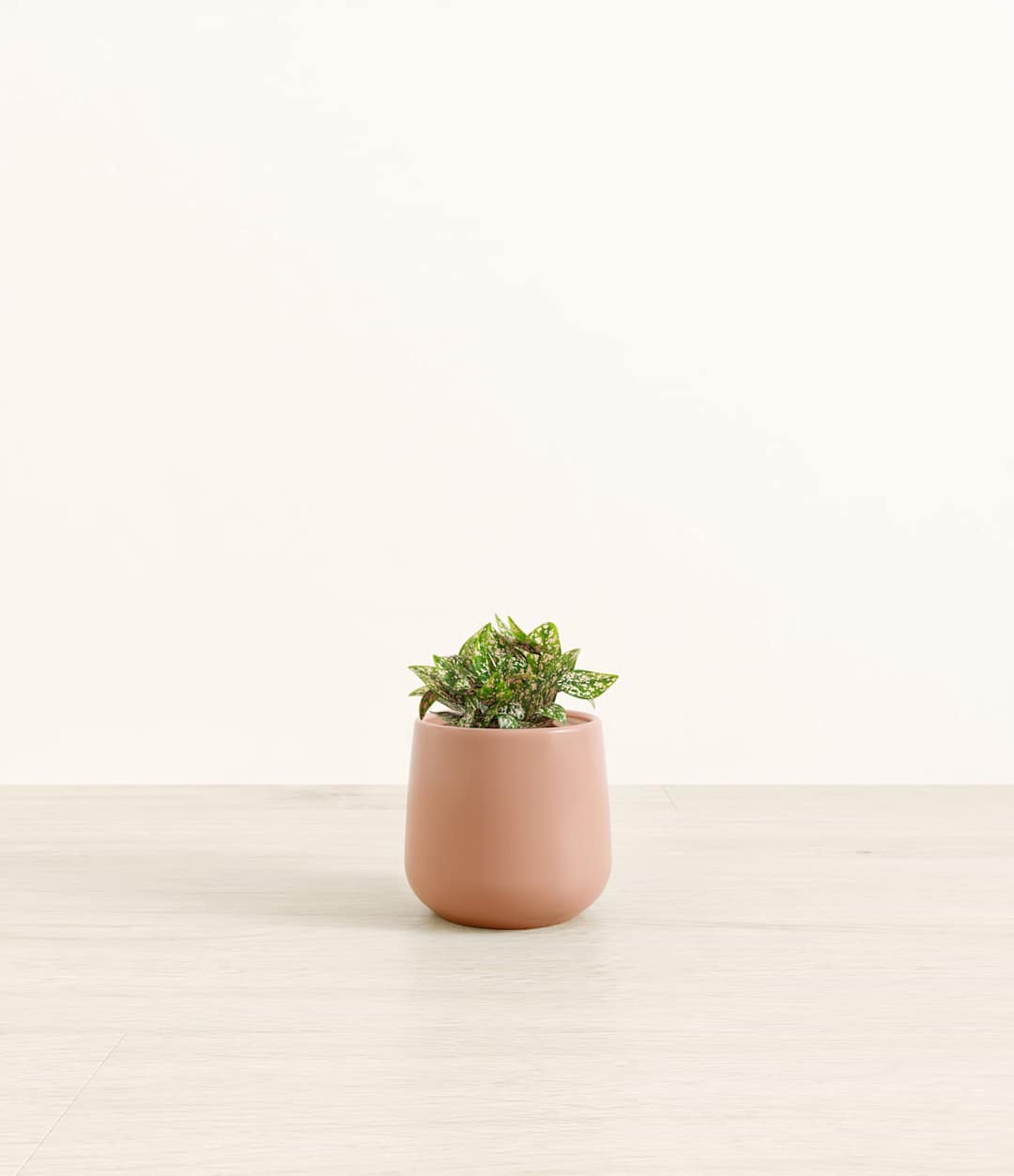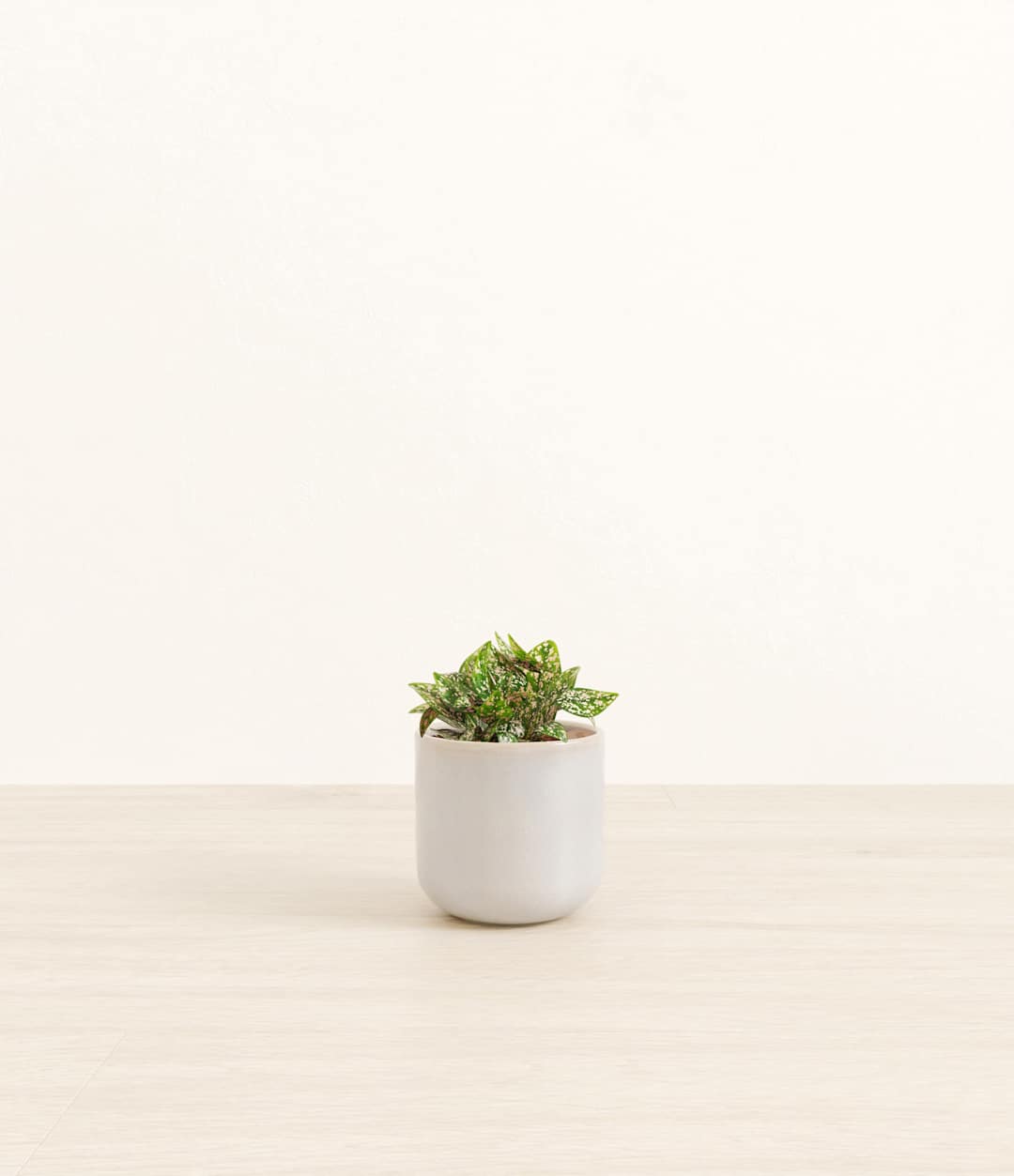How to Care for Polka Dot Plants
Shop this plantAbout Polka Dot Plant
Native to the lush forests of Madagascar, the Polka Dot Plant, or Hypoestes phyllostachya, is a delightful houseplant known for its strikingly vibrant pink, white, or red leaves adorned with playful green spots. This compact and eye-catching plant is perfect for adding a touch of whimsy and color to any indoor space. Renowned for its decorative foliage, the Polka Dot Plant brings a sense of joy and liveliness to your home, making it an ideal choice for plant enthusiasts looking to brighten up their living environment. The Polka Dot Plant thrives in conditions that mimic its natural tropical habitat, ensuring it remains healthy and vibrant throughout the year.
Other common names
- Hypoestes phyllostachya
- Baby's Tears
- Flamingo Plant
- Freckle Face
- Measles Plant
- Pink Splash
How Often Should I Water My Polka Dot Plant?
With easyplant, watering your Polka Dot Plant is straightforward and stress-free. Simply check the easyplant reservoir once a month and refill it when empty to maintain consistent moisture levels, ensuring your plant receives the hydration it needs without the guesswork.
Polka Dot Plant Light Needs
The Polka Dot Plant grows best in a space with medium to bright indirect light, where the sun rays are diffused, and can also adapt to spaces with bright direct light, where the sunlight streams inside directly. Avoid placing it in spaces with low light or spaces without natural sunlight.
For optimal growth, place your Polka Dot Plant near an east or north-facing window where it can receive ample light without direct exposure to harsh sun rays. If natural light is limited, this plant can also thrive under fluorescent lighting, making it a great option for offices and other indoor spaces with artificial light sources. Ensuring the right light conditions will help maintain the vibrant color and unique spotted patterns on its leaves, promoting a healthy and lively appearance.
Polka Dot Plant Care
On its first few days at home, your Polka Dot Plant might shed a leaf or two as it acclimates to its new environment. This is a normal adjustment period and shouldn't cause concern. To help it settle in, avoid moving the plant too frequently, which can cause stress. Instead, find a suitable spot with ideal light conditions and maintain a stable environment.
To maintain its vibrant appearance and promote healthy growth, dust the leaves regularly and rotate the plant by a quarter turn every month. This ensures all sides of the plant receive equal light, preventing it from leaning towards the light source.
Additionally, pruning any leggy or damaged growth will help keep your Polka Dot Plant looking lush and full. Regular care and attention will ensure that your plant continues to thrive and enhance your living space with its colorful and playful foliage.
How Big Will My Polka Dot Plant Grow?
The Polka Dot Plant (Hypoestes phyllostachya) generally grows to a height of 12-18 inches and can spread up to 12 inches wide. Its bushy, compact growth habit makes it a perfect choice for brightening up smaller indoor spaces with its cheerful, spotted foliage. Regular pruning can help maintain its shape and encourage fuller growth.4o
Temperature & Humidity
The Polka Dot Plant thrives in warm environments, with ideal temperatures ranging between 65-75°F (18-24°C). It is important to avoid placing the plant near drafts, such as those from windows, doors, or air conditioning vents, as sudden temperature fluctuations can stress the plant and affect its health. Humidity is a crucial factor for the well-being of the Polka Dot Plant. This tropical plant prefers moderate to high humidity levels, ideally between 50-70%. If the air in your home is too dry, especially during winter months when heating systems are in use, consider increasing the humidity around your plant. You can do this by placing a humidifier nearby, using a pebble tray filled with water, or grouping it with other plants to create a more humid microenvironment. Maintaining the right temperature and humidity levels will help keep your Polka Dot Plant healthy and vibrant, ensuring its distinctive spotted patterns remain vivid and its leaves lush.4o
Are Polka Dot Plants Toxic for Pets & Kids?
The Polka Dot Plant (Hypoestes phyllostachya) is generally considered non-toxic to both pets and humans, making it a safe choice for households with curious pets or young children. While it is not known to cause serious health issues if ingested, it's always a good practice to keep all plants out of reach of pets and children to prevent any potential issues or accidental damage to the plant. As with any plant, ingestion of large quantities might lead to mild stomach upset, so ensuring the plant is placed in an area that is not easily accessible to pets and children can help avoid any problems. Regularly monitoring the plant and providing a safe environment will help keep both your household members and your Polka Dot Plant happy and healthy.
Troubleshooting Common Problems with Polka Dot Plant
If you notice your Polka Dot Plant has yellowing leaves, this often indicates overwatering. Allow the soil to dry out between waterings and ensure that the reservoir is empty before refilling it.
If the edges of your Polka Dot Plant leaves turn brown, it could be a sign of low humidity or inconsistent watering. Increase the humidity around your plant by using a humidifier, placing it on a pebble tray with water, or grouping it with other plants. Ensure you water according to instructions, allowing the soil to dry slightly between waterings.
If you notice your Polka Dot Plant becomes leggy, it is likely not receiving enough light. Move the plant to a brighter location with medium to bright indirect light to encourage more compact and healthier growth.
Sudden leaf drop can occur due to environmental stress such as sudden temperature changes, drafts, or inconsistent watering. Ensure your Polka Dot Plant is in a stable environment with consistent care routines.
Common pests that can affect the Polka Dot Plant include spider mites, aphids, and mealybugs. Regularly inspect your plant for signs of pests and treat any infestations promptly with insecticidal soap or neem oil. Keeping the leaves clean and dust-free can also help prevent pests.
By closely monitoring your Polka Dot Plant and addressing any issues promptly, you can ensure it remains healthy and continues to enhance your indoor space with its vibrant and playful foliage.
Frequently Asked Questions about Polka Dot Plant Plant
- Do polka dot plants need sun?
Yes, Pink Polka Dot Plants need light to thrive. They grow best in medium to bright indirect light. They can adapt to bright direct light but should be protected from intense direct sunlight, which can scorch their delicate leaves.
- How do you care for a polka dot plant indoors?
To care for a Polka Dot Plant indoors, provide medium to bright indirect light, water when the top inch of soil feels dry, and maintain moderate to high humidity. Keep the plant in a warm environment, between 65-75°F (18-24°C), and avoid drafts. Regularly dust the leaves and rotate the plant to ensure even growth.
- How often should you water a polka dot plant?
Water your Polka Dot Plant when the top inch of soil feels dry. Typically, this means watering approximately every 1-2 weeks, depending on the humidity and temperature of your environment. Consistent watering helps maintain the plant's vibrant foliage.
- What is the lifespan of a polka dot plant?
The Polka Dot Plant is an annual in its natural habitat but can live for several years indoors with proper care. Regular pruning, consistent watering, and appropriate light conditions can help extend its lifespan and keep it healthy and vibrant.



